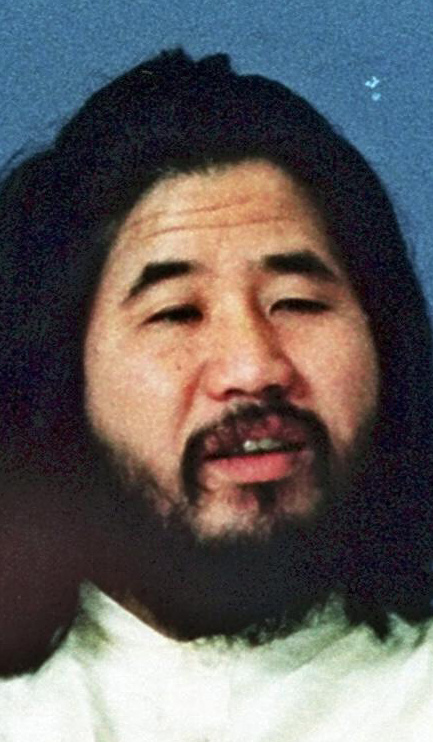TOKYO — The execution of Japanese doomsday cult leader Shoko Asahara leaves unanswered questions about Aum Shinrikyo, which carried out the 1995 sarin gas attack on the Tokyo subway that killed 13 people and sickened 6,000.
Japanese government spokesman Yoshihide Suga confirmed that Asahara was executed Friday. Authorities said six other cult members were hanged.
Born Chizuo Matsumoto in 1955, Asahara founded Aum Shinrikyo, or Supreme Truth, in the mid-1980s. It attracted young people disillusioned with the modern materialistic way of life.
Half-blind, with a shaggy hair and beard, Asahara was the key figure in the stunningly random and lethal attack targeting Tokyo commuters.
He used a mixture of Hinduism, Buddhism, Christianity and yoga to draw followers. They took part in bizarre rituals, such as drinking his bathwater and wearing electrical caps they believed synchronized their brain waves with Asahara’s.
Asahara chose doctors, lawyers and scientists from Japan’s universities as his top aides, making them ministers of his pseudo-government of the Aum empire. They worshipped him and carried out his orders.
The group used donations from followers and earnings from yoga classes and health food businesses to amass cash to buy land and equipment.
They made and bought conventional weapons in and outside Japan, while the scientists he had recruited developed and manufactured sarin, VX and other deadly chemical and biological weapons.
During his trial, Asahara often used diapers and sat on a cushion intended to make his incontinence inconspicuous. He stopped communicating with his children and defense team.
A court-appointed psychiatrist suggested he might be faking insanity to avoid punishment. The initial death sentence in 2004 became final after his defense team could not file an appeal citing his mental state.
In a rare interview in 2006, two of Asahara’s four daughters told The Associated Press that never in dozens of visits to him in prison had they had a real conversation.
Asahara just sat and at times fidgeted or grunted. The daughters’ repeated petitions for retrials were refused. They said his condition might have worsened since they were last allowed to see him in 2008.
Yoshihiro Yasuda, Asahara’s main lawyer during his trial, said the last time he was allowed to see Asahara at the detention center was in 2006.
After that, the Tokyo detention center rejected requests for meetings with Asahara more than 400 times, citing the absence of a reaction from Asahara.
The reasons behind the sarin gas attack remain an enigma. Cult members have said they believed Asahara’s prophecy that an apocalypse was coming and they alone would survive it.
Send questions/comments to the editors.



Success. Please wait for the page to reload. If the page does not reload within 5 seconds, please refresh the page.
Enter your email and password to access comments.
Hi, to comment on stories you must . This profile is in addition to your subscription and website login.
Already have a commenting profile? .
Invalid username/password.
Please check your email to confirm and complete your registration.
Only subscribers are eligible to post comments. Please subscribe or login first for digital access. Here’s why.
Use the form below to reset your password. When you've submitted your account email, we will send an email with a reset code.